Inbuilt Material Properties
Fluid Properties
Flow Simulator employs a separate routine to calculate fluid properties. The fluid properties are determined by a perfect gas assumption (properties a function of temperature only) or interpolation of real gas data. The following mixing conditions can be considered:
- Air as a perfect gas
- Mixture of air as a perfect gas and steam
- Mixture of air as a perfect gas and real gas
- Mixture of 2 real gases
When using air as a perfect gas, the properties are returned as a function of the absolute temperature. When using steam or real gas, the properties are returned as a function of absolute temperature, pressure, and the secondary fluid mass fractions. The following fluid properties are returned:
γ: Specific heat ratio
Cp: Specific heat at constant pressure
R: Gas constant
K: Thermal conductivity
μ: Viscosity
Pr: Prandtl number
Nomenclature:
T: Fluid temperature
Ru: Universal gas constant
FS: Secondary fluid mass fraction in pounds of second fluid per pound of mixture.
MW1: Molecular weight of fluid 1
MW2: Molecular weight of fluid 2
Air Properties
Ideal Gas Assumption
If air is assumed to behave as an ideal gas, its properties are determined by functions dependent on temperature only. The specific heat ratio, taken from NACA 1135, equation 180, is given as:
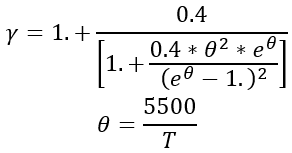
Thermal conductivity and viscosity are assumed to follow Sutherland’s Law. The following equations, taken from White, are used:

Using a value for the molecular weight of air of 28.96451, the gas constant becomes:
![]()
The specific heat and Prandtl number for air are then calculated from the above using the equations:
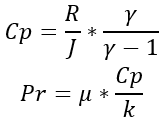
The range of validity of these air properties is –300 F to 3500 F.
Steam Properties
The steam properties were derived from ASME steam tables. The thermodynamic properties cover the range where the fluid is vapor for temperatures between 100F and 1500F and pressures between 1.0 psia and 1500 psia. Specific heat ratio and the inverse of specific heat at constant pressure are contained in table form in the program and linear interpolation by temperature and pressure is used to extract values. The transport properties k and μ are functions of temperature only and are calculated using the equations:

The saturation temperature of steam is contained in tabular form and is checked to ensure that chamber temperature remains in the superheated range in all chambers. The solution is stopped if this error occurs. A warning is displayed and/or printed if the temperature in a chamber gets within 50F of saturation.
Properties of Mixed Air, Steam, and Real Gases
Flow Simulator has the capability to analyze systems with mixtures of steam, air, and real gases (ex. methane, and carbon dioxide). The system used to do this is approximate because ideal gas assumptions employ Cp rather than enthalpy for the calculation of the temperature of co-mixing of streams of different fluids.
The mass weighted mixing model is always used for the thermodynamic properties of specific heat at constant pressure. The partial pressure of the fluid is used to obtain properties for steam and real gas. Ideal air properties are not a function of pressure. The mass weighted mixing equations, presented here for specific heat, entropy, enthalpy, and density, are as follows:
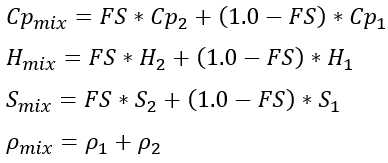
The molecular weight and gas constant of the mixture are calculated using
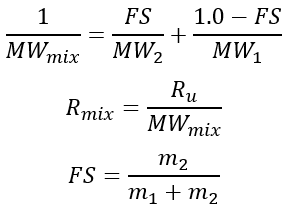
The viscosity and conductivity of the mixture are calculated using molecular mixing models. For the molecular mixing model, the mole fraction of the second fluid, X2, is calculated from the second fluid mass fraction as:
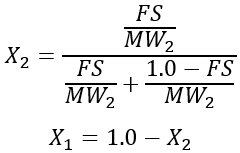
Specific equations for the transport properties were obtained from
Viscosity for the air-steam mixtures (and viscosity and thermal conductivity for mixtures with real gas) are calculated using Chapman-Enskog Kinetic Theory from the equation

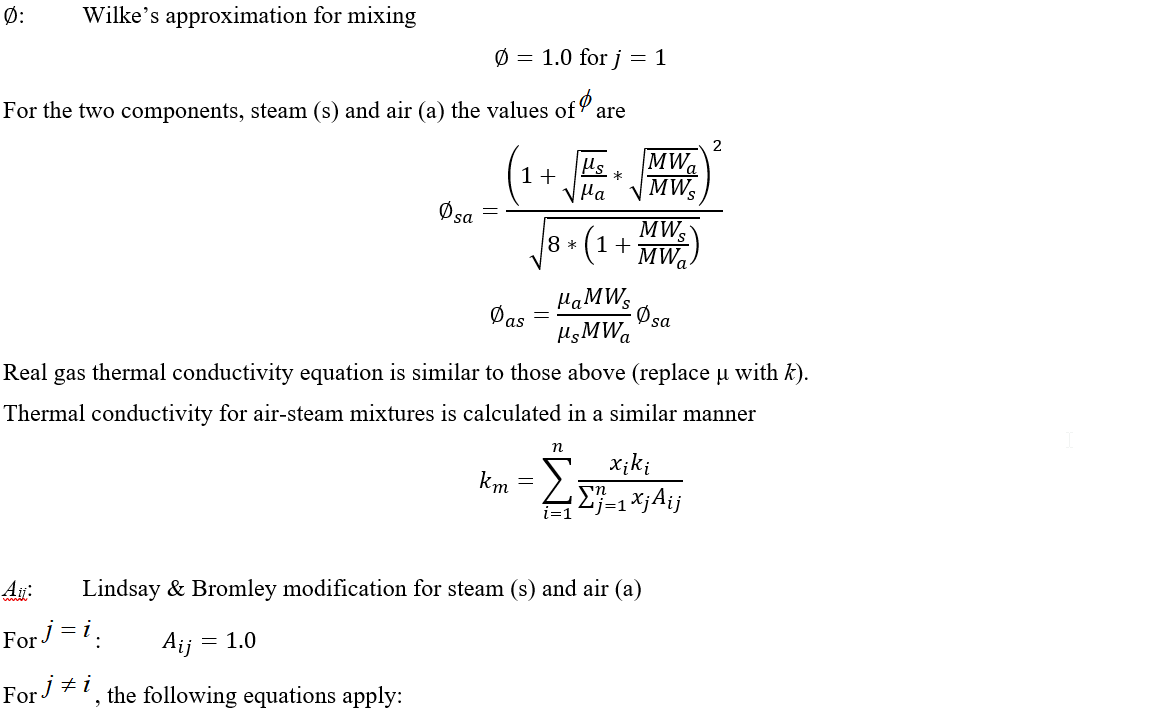

All temperatures in absolute units
Prandtl number and the specific heat ratio for the mixture are simply computed using the mixed properties:
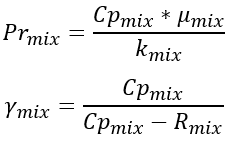
Incompressible Liquid Properties
Flow Simulator gives the user the option of modelling incompressible liquids. Flow Simulator currently supports five liquids: Water, Jet A, Mil PRF 23699 Oil, Mil 7808 Oil and VG-32 Oil.
Jet A
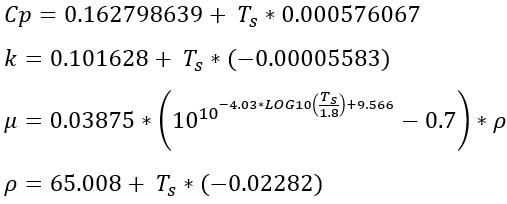
MIL PRF 23699 Oil
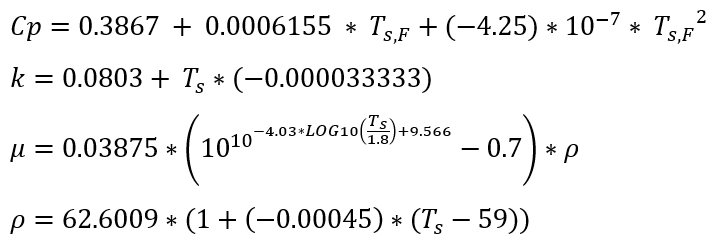
MIL PRF 7808 Oil

Note: In the above fluid properties calculation equations TS,F are in Fahrenheit.
VG 32 Oil
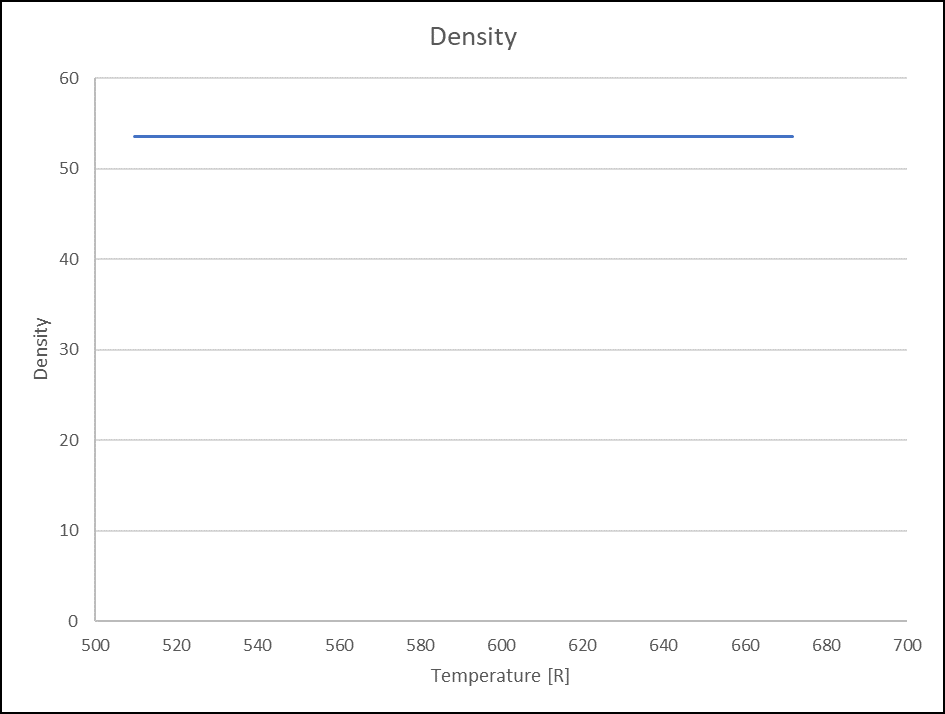
Figure: Density(Lbm/ft3) for VG32 Oil
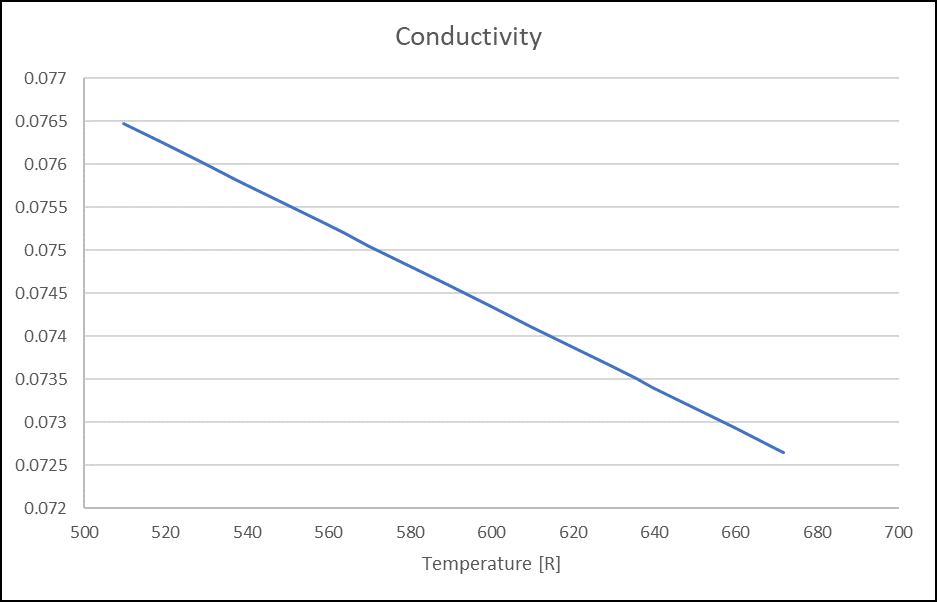
Figure: Thermal Conductivity (Lbm/hr.ft.F) for VG32 Oil
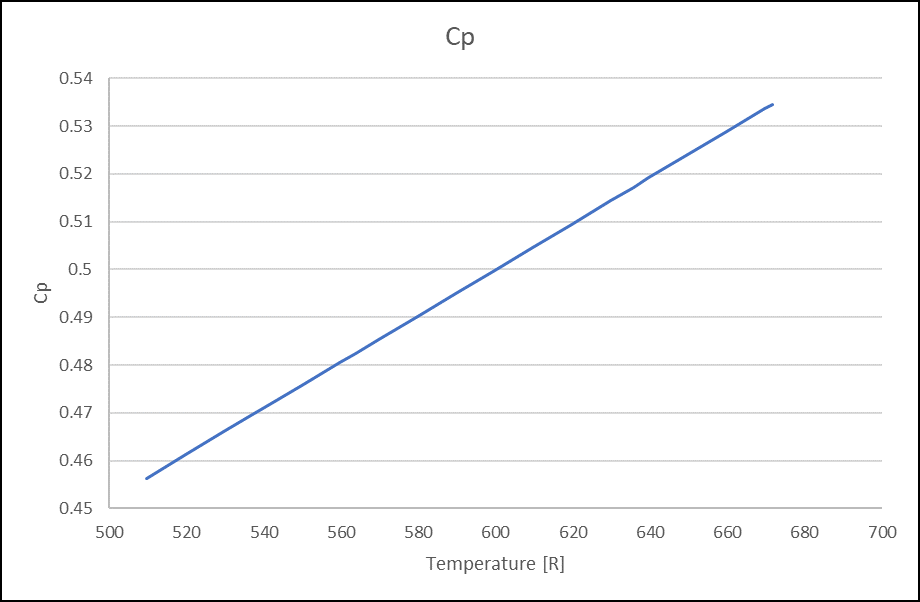
Figure: Specific Heat (Btu/Lbm.degR) for VG32 Oil
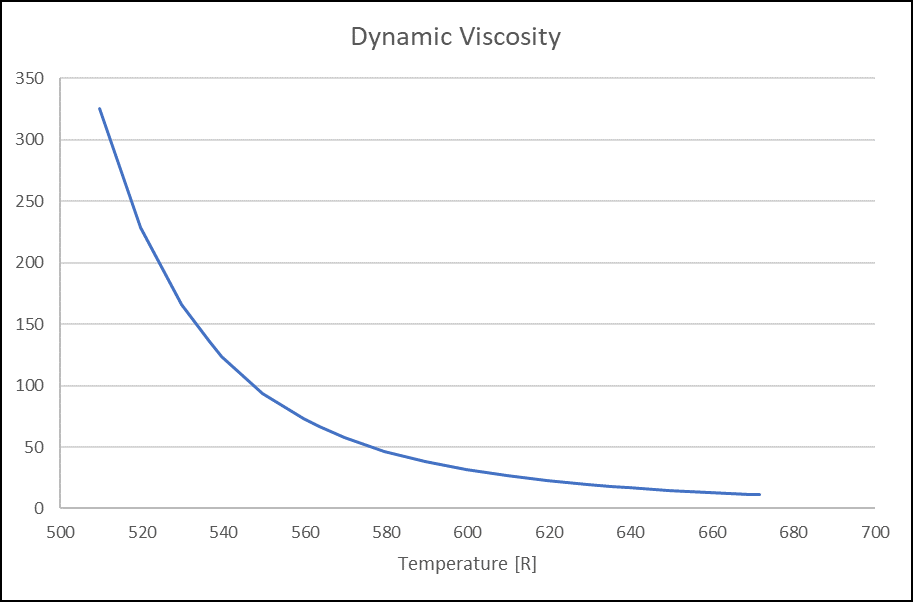
Figure: Dynamic Viscosity(Lbm/hr.ft) for VG32 Oil
Water
Water properties are implemented as tables in Flow Simulator. The tables for each fluid property are plotted below:
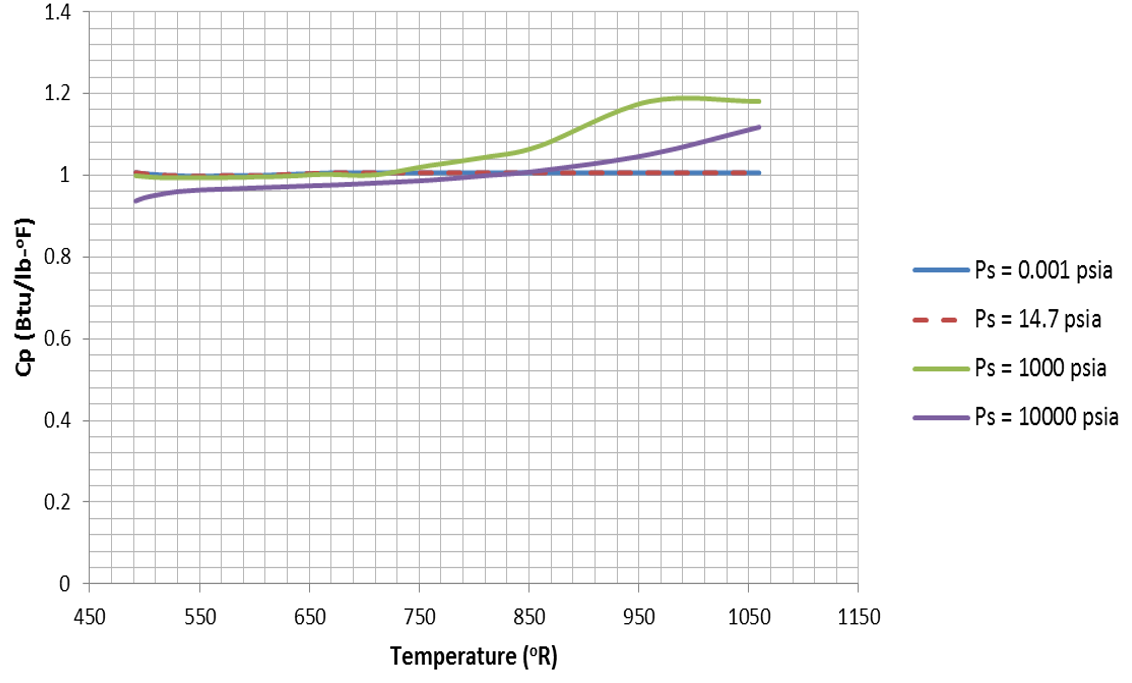
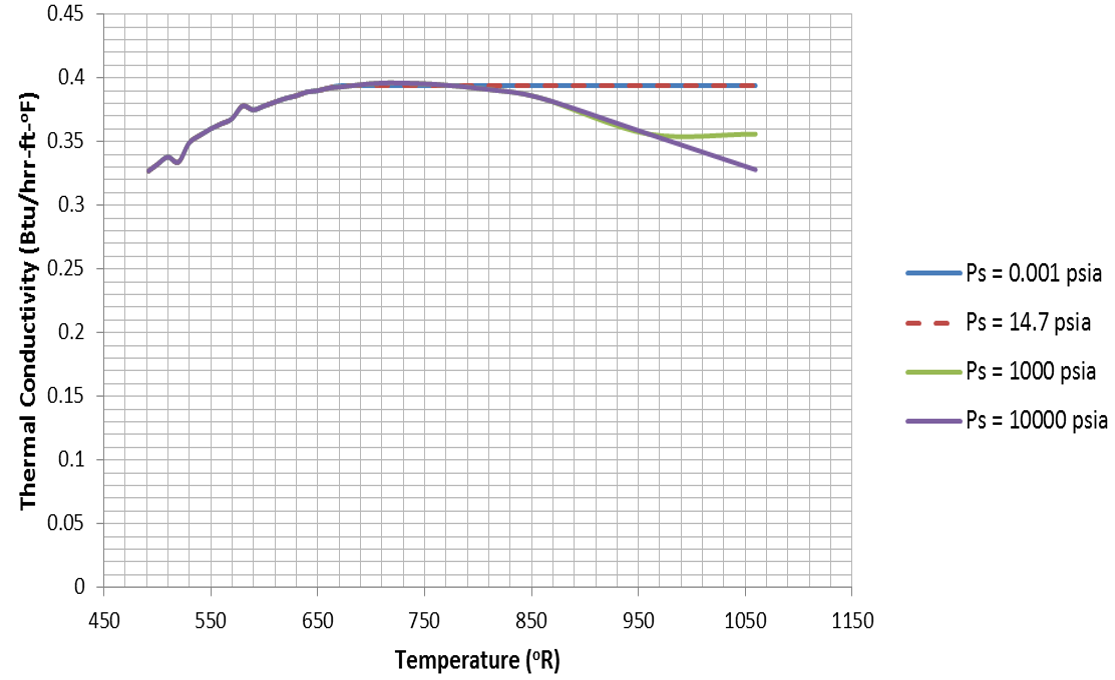
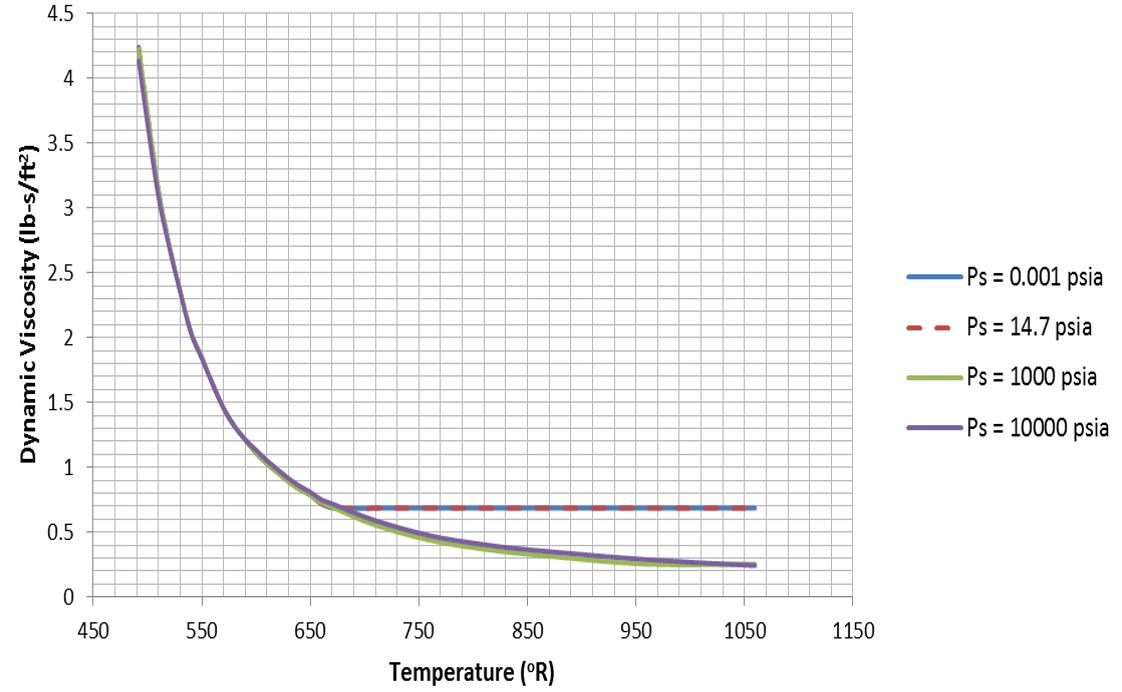
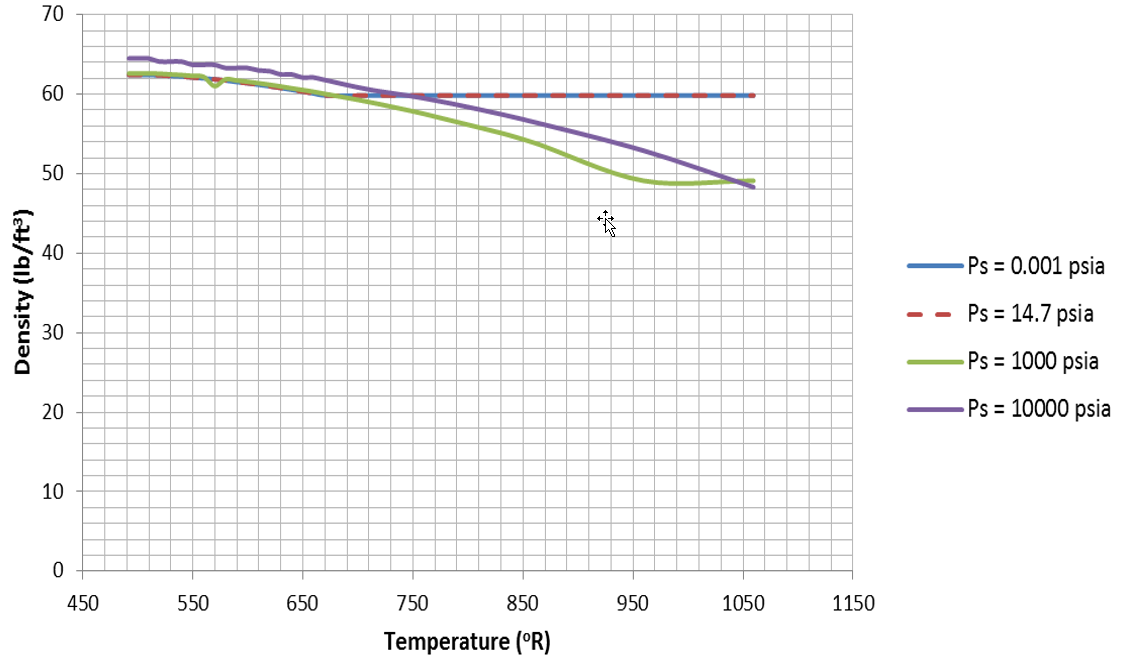
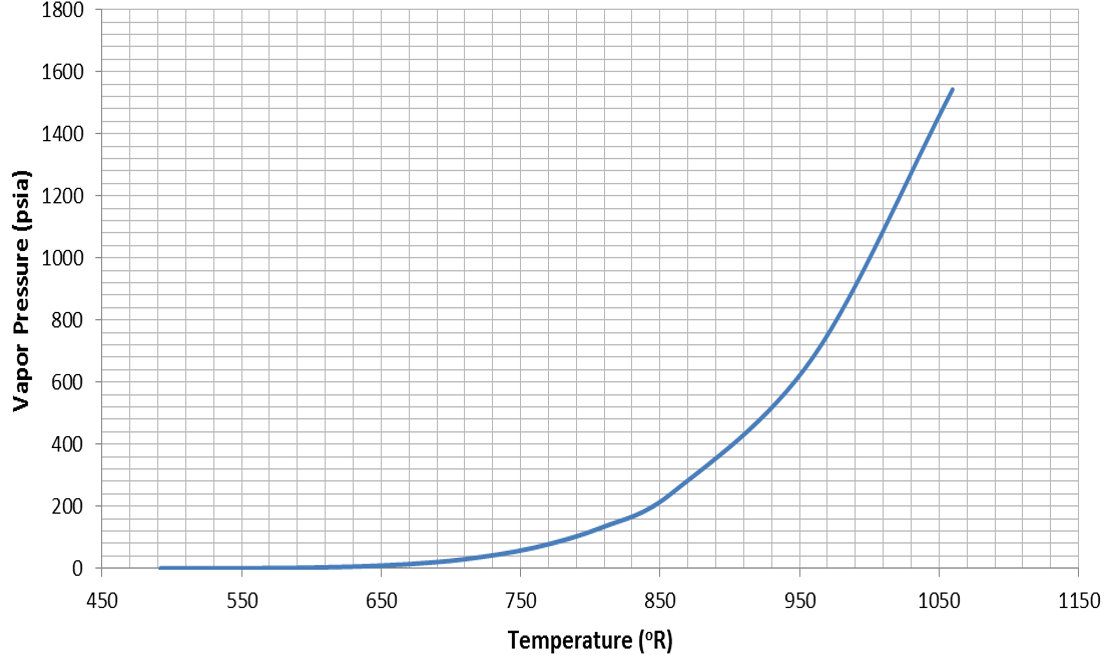
Figure: Vapor Pressure for Water
Solid Material Properties
Flow Simulator currently supports following solid materials: Stainless Steel 321, Inco 625, SuperWool 607, Ceramic Paper, PTFE_PBI.
Stainless Steel 321
ρ = 501.11 ! lbm/ft^3
EMISS = 0.85
Cp = 0.119503 ! BTU/(lb.F)

Inco 625
ρ = 523.58 ! lbm/ft^3
EMISS = 0.71
Cp = 0.098 ! BTU/(lb.F)
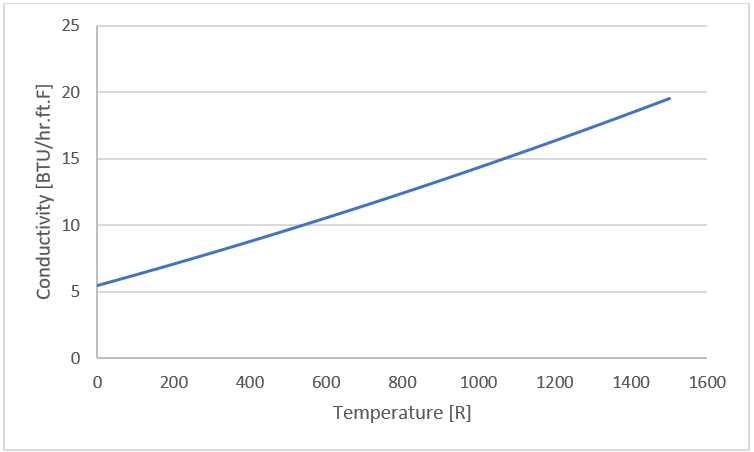
Superwool 607
ρ = 13.10988 ! lbm/ft^3
EMISS = 0.79
Cp = 0.1624152097 ! BTU/(lb.F)
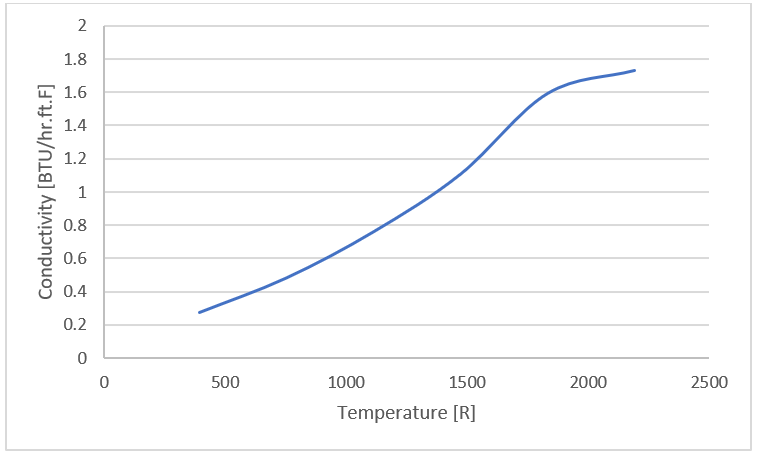
PTFE_PBI
k = 1.733368 ! BTU/hr.ft.F
ρ = 137.3416 ! lbm/ft^3
EMISS = 0.92
Cp = 0.23168 ! BTU/(lb.F)